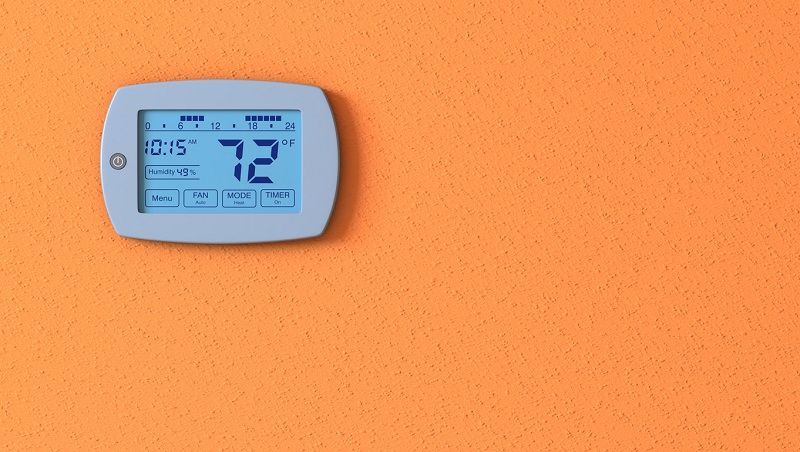How much do you really know about the thermostat in your home?
You know how to raise and lower the temperature to your desired comfort, but what about after that?
Don't worry! We can help you learn more about it — especially where to place it, which is beyond important!

What is a Thermostat?
The thermostat is a device that is strategically placed on a specific wall in the house (depending on your home’s layout). It's a temperature sensitive switch that allows the homeowner to set the temperature that they would like the house to be, and a signal is sent to the cooling or heating system to warm the air up or cool it down.
Some of the more modern types of thermostats are programmable and zoned. Zoned heating and cooling saves energy by allowing different temperatures to be set for different rooms. Other modern thermostats can also be programmed remotely to turn on and off the HVAC system at different times throughout the day.
Where Should a Thermostat Be Placed?
In order for even a sophisticated thermostat to work correctly, it needs to be placed in the right spot in the home. This means it shouldn’t be placed:
- Above or near a radiator, fireplace, stove or another heat source
- In an area that gets direct sunlight
- In the kitchen, where the temperature can fluctuate wildly over the course of the day
- Near windows and doors where outside air can rush in to make the temperature fluctuate.
When a thermostat is placed in any of these areas it will show a temperature that’s cooler than the room feels and cause the furnace or the air conditioner to continually cycle on and off. This not only makes it impossible for the room to be comfortable but also adds stress to the HVAC system and wastes energy.
As long as the thermostat is not in any of these places listed above, you should feel comfortable placing it anywhere else (as long as it is easily accessible). Oftentimes the best area of the house to place the thermostat is around the center of the house.
Learn More About Your Thermostat
Whether your thermostat is old and needs replacement, or is brand new and you’re not sure how to get the most out of it — know that we can help!
Our professional HVAC technicians can assist you in the replacement, repair, and education of all things thermostat. So keep our number handy for when you’re ready to talk!

